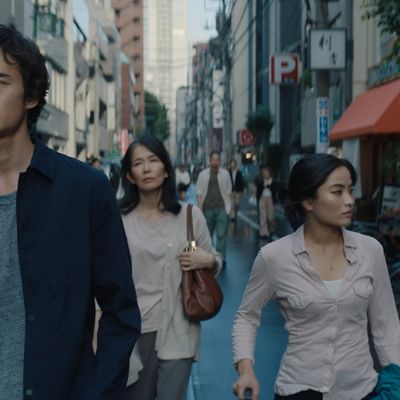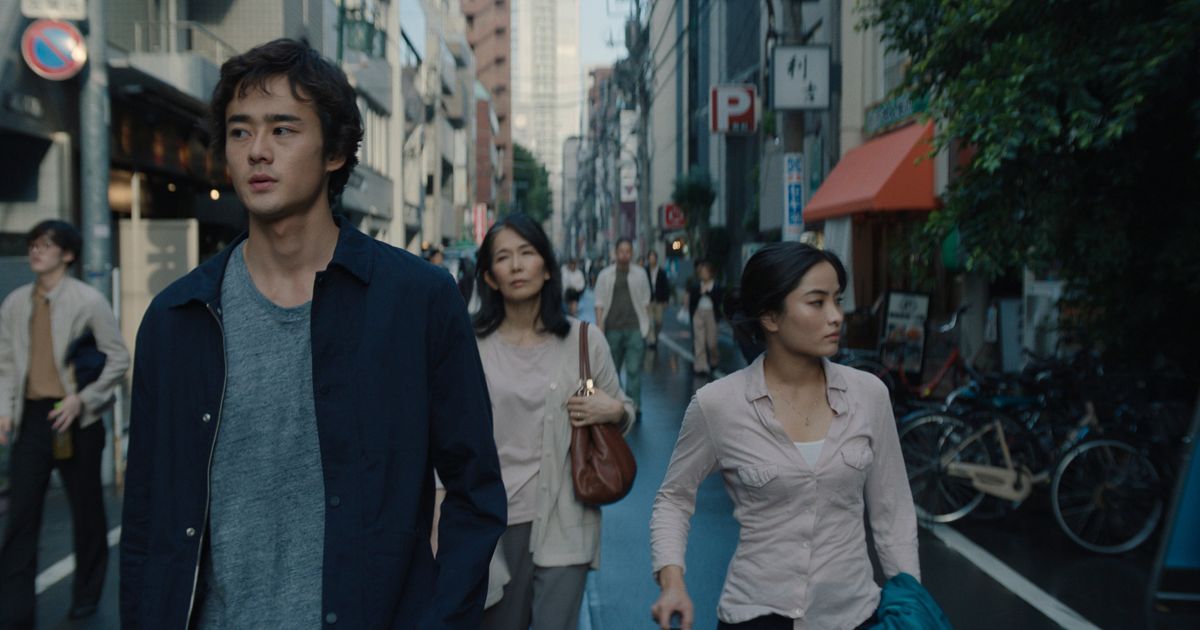
The secret of most of the 30-plus Godzilla movies that have come out over the past 69 years is that the King of the Monsters doesn’t actually have a ton of screen time in them. He’s in Godzilla vs. the Astro-Monster, a classic from the ’60s that’s regarded as one of the best in the whole franchise, for all of five minutes and change. So how do you make a good Godzilla movie without much, you know, Godzilla? It’s pretty simple, in theory: the plot and the human characters — and that’s especially true for the small screen, because even with Apple paying for all the kaiju action, you can’t just have nonstop monster mashing on a TV budget. So the premiere of the new Apple TV+ series, which is nestled in various eras of the Monster-Verse canon, is light on monsters to start and heavy on human drama and intrigue.
Monarch: Legacy of Monsters is not the first time Godzilla has stomped on the small screen. There was the infamous Hanna-Barbera cartoon in the ’70s, a cartoon spinoff of the Matthew Broderick movie that wasn’t ashamed of its kaiju roots (unlike the movie that spawned it), and more recently, a pretty fun Netflix anime, to name a few. But Monarch has more riding on it, as it’s attempting to make the MonsterVerse a multimedia franchise. (That it’s coming out as the Marvel and Star Wars TV efforts are getting wobbly is interesting.) Monarch won’t be able to have Godzilla fight Kong again — that rematch is set for the big screen next year — but it will fill in the gaps of Monarch, the titular organization that has become the real human through-line throughout all of the various MonsterVerse films.
Right away, the premise of Monarch threatens to constrain these giant monsters. The story takes place across two timelines. The first is in the 1950s, where Wyatt Russell plays an Army officer named Lee Shaw. The second is in 2015, where Kurt Russell plays an older Shaw, though he’s MIA in the series premiere. This means that half of the action is set before Godzilla fights with MUTOs in San Francisco and makes the existence of Titans public knowledge. The other half is set between the 2014 film and Godzilla: King of the Monsters, and unless the show changes things, there wasn’t any major building smashing happening during that time. This is going to be a covert show about secret kaiju cover-ups, which has potential but also explains why two of the three monster scenes in this episode are flashbacks to the events of the movies.
The episode begins with one such flashback, as John Goodman makes a welcome surprise appearance to play Bill Randa, the Monarch operative who spearheaded an expedition to Kong’s home of Skull Island in 1973, once more. Apparently, at some point when his team was getting chased by the oversize native Skull Island fauna, Randa fled a big spider and made it out to a cliff by the sea, where he chucked a bag full of recordings into the ocean. He’s recorded a video to who we’ll presumably learn is his son, apologizing for what he “took” but promising he wanted to leave a legacy — to “prove it was all worth it.”
Those who remember Kong: Skull Island know that Randa doesn’t make it out in one piece (he gets got by a Skullcrawler, RIP), but his package does, getting picked up by a fishing trawler in the Sea of Japan in 2013 and eventually making its way to a hidden safe in the Tokyo office of a cheater. It’s 2015, the year after Godzilla helped level San Francisco, and Cate is on a plane to Tokyo to settle her late father’s affairs. Japan, it seems, has gone all in on anti-Godzilla safety measures, constructing missile-defense systems and Godzilla evacuation routes, and spaying down visitors with something meant to get rid of any Titan parasites. Tokyo’s prepared, but Cate isn’t when she opens the door to the apartment her dad apparently had and discovers that he had a secret family with a wife and a son — her half-brother, Kentaro.
It’s an awkward meeting, as one might expect, and the two secret families are unable (or unwilling) to clarify which one came first before Cate extricates herself. She’s not able to escape them for long as an alarm goes off, and Kentaro and his mom help usher her into a Godzilla-proof bunker. Cate has a panic attack as she flashes back to G-Day, and we see that she was on the Golden Gate Bridge when Godzilla waltzed through it. The 2014 Godzilla was dinged for being stingy with how much of Godzilla it showed, so this new scene of his destruction should be a welcome treat for fans. Godzilla may have stopped the MUTOs, and he would go on to fight other more threatening Titans in the subsequent movies, but he’s hardly an outright hero. There’s collateral damage, including the still-pretty-full bus of schoolchildren that Godzilla sends plummeting to their deaths as Cate watches.
Kentaro’s mom comforts Cate during this and, after the drill is over, insists that Cate come have tea with them. Kentaro begrudgingly agrees that they need to learn more about whoever their dad really was. He takes Cate to their dad’s office, and behind a map, she discovers a safe that she’s able to unlock by guessing a passcode (a combination of his two wives’ and two children’s birth dates). Inside is Randa’s bag, and inside Randa’s bag are a bunch of tapes of some sort. Kentaro brings them to his ex, May, an American expat and coder. When she attempts to decrypt them, Monarch HQ gets an alert and dispatches agents to Tokyo to track down these seemingly lost files. Cate recognizes the Monarch symbol since she saw Monarch agents and researchers on G-Day. Neither she nor Kentaro knew their family was connected to Monarch or this Titan business before now. Cate hasn’t seen her father since five days after G-Day when he found her in a camp and then promptly jetted off. A week later, Cate got word that his plane had been reported lost in Alaska. And, amid the decrypted files, Cate and Kentaro see someone they recognize — a photo of their grandmother standing in what looks like Godzilla’s footprint.
That brings us to Monarch’s other timeline. It’s 1959 in Kazakhstan, and their grandmother, Keiko, is a young scientist who is on a mission with her partner, a young, pre–Skull Island Billy Randa. They’re joined by Wyatt Russell’s Lee Shaw, an Army officer tasked with keeping these two researchers safe. This isn’t their first rodeo — they reference past encounters with Titans and MUTOs. They’re headed to a decrepit old power plant of some sort, one that should be dangerously radioactive, except the Geiger counter goes silent once they’re at ground zero. It’s the work of the Titans, who, as Lee says, think the “A in A-bomb stands for appetizer.”
As they do their research, they discover a sunken chamber full of eggs of a new form of MUTO, and Keiko and Lee climb down (against Lee’s wishes) to collect a sample. But show me a monster egg that doesn’t hatch, and I’ll show you a wasted narrative. Countless insectoids scramble after the pair as they try to flee, and although Lee and Billy do everything they can, Keiko is swarmed by the bugs and falls to her death in a fairly disturbing way, ending the episode.
Presumably, this won’t be the last we see of Keiko. The Monarch premiere begins in like five different sorts of in medias res, and we’ll have to go back before we go forward so that we can see the actual founding of Monarch, the discovery of the Titans, and eventually learn what this “legacy” Randa threw into the Skull Island surf is. The monster action is slight but well done, and there’s promise with these human characters we’ll be spending time with — not to mention the promise of the elder Russell in future episodes. If this is going to be a monster story in the margins, we could do worse than secret families, fun scientists, and a heap of mysterious blanks waiting to be filled. The only real worry is that, with so many timelines and mysteries and intentional narrative gaps, Monarch could get too lost in the contrivances of its own mystery box rather than telling a straightforward, effective human story. And, also, a monster story.
• Promotional materials for Monarch openly identified Cate’s last name as being Randa, though watching the episode in a vacuum makes it seem like her heritage is supposed to be a bit of a reveal. And you’d be forgiven for not realizing right away that Anders Holm is playing a young version of John Goodman’s Skull Island character. But to summarize the family tree: Cate and Kentaro are half-siblings, and their father, Hiroshi, is the son of Keiko and Billy Randa.
• Aside from Godzilla and some brief footage of Kong from Skull Island, none of the Titans in this episode are familiar kaiju. There are plenty of creepy-crawly kaiju from the Toho movies, like spider Kumonga, shrimp Ebirah, and insectoid Meganulon, but it seems likely that none of the big bugs in this episode are meant to be the MonsterVerse’s take on classic kaiju. Legendary, the studio behind the MonsterVerse, gets the rights to existing Toho monsters like Rodan and Mothera on a movie-by-movie basis, so if a classic monster appears in this series, it’ll be a big deal. Until then, enjoy the MonsterVerse’s somewhat generic-looking original kaiju.
• It’s interesting that Godzilla is the focus of all of Japan’s anti-Titan branding. The real-world answer is that Godzilla is the most iconic monster, and he’s a Japanese creation, but in the MonsterVerse, it’s really been the MUTOs, not Godzilla, who have caused the most damage — including to Japan, which a MUTO hit in the opening of the 2014 movie. I guess Godzilla is still alive and out there, whereas, as far as everybody knows, the MUTOs are dead?
• If I am ever “too negative” in any of these recaps going forward and any Godzilla fans reading take umbrage, please know that I think Godzilla vs. Kong is a five-star masterpiece (said only semi-ironically), and I think it doesn’t get enough credit for saving cinema. Godzilla was my first fandom, and if my standards are high, it’s because I only want the best for (and from!) the Big G.





